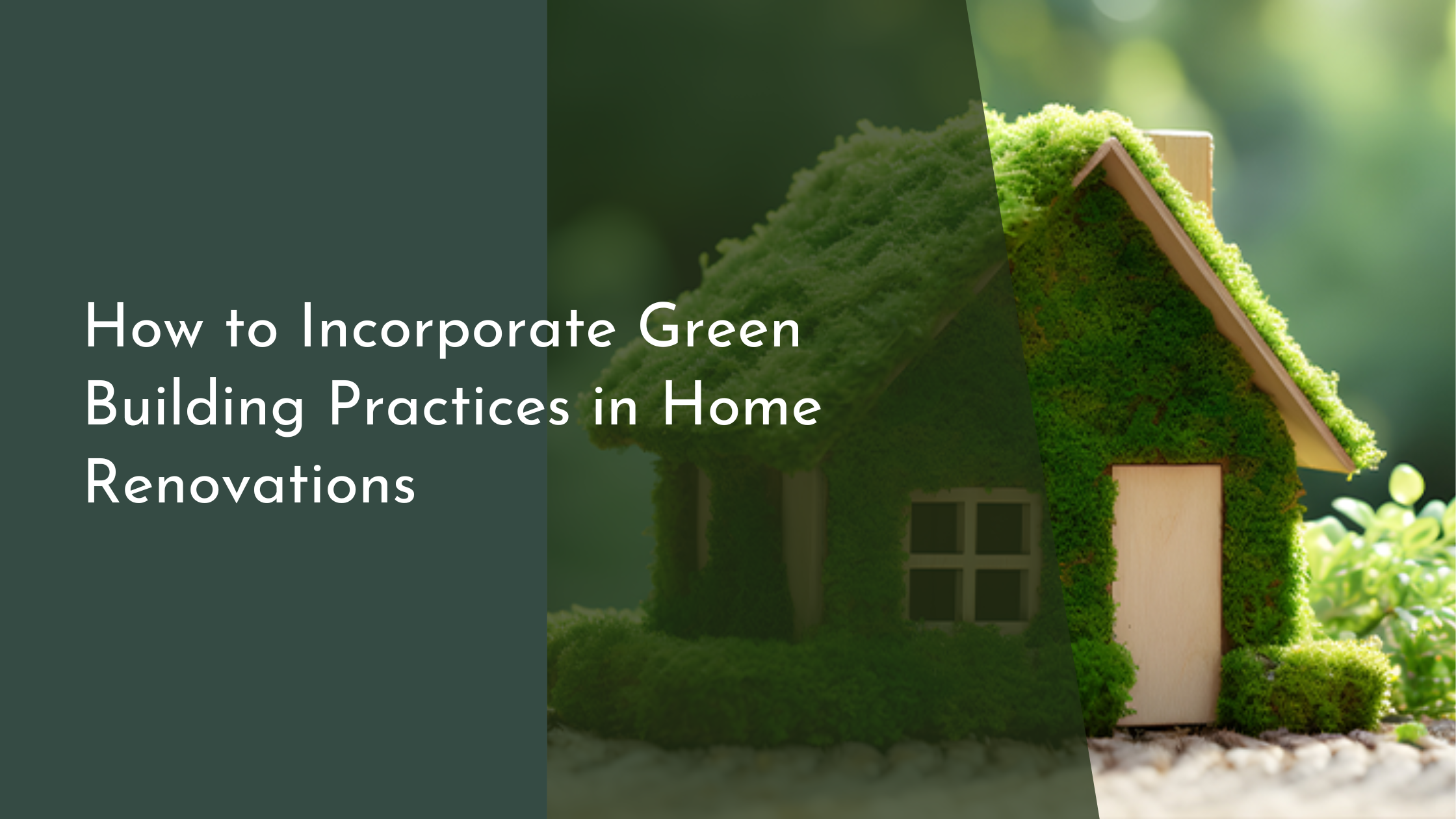How to Incorporate Green Building Practices in Home Renovations
In recent years, the movement towards sustainable living has gained significant momentum. Many homeowners are now eager to incorporate green building practices into their renovations, not only to reduce their environmental footprint but also to enjoy the long-term financial savings and health benefits associated with eco-friendly homes. This article explores various aspects of integrating green building principles, from selecting eco-friendly materials to implementing energy and water-saving measures, making it easier for you to embark on a sustainable home renovation journey.
Understanding Green Building Principles
Green building principles focus on reducing the environmental impact of construction and renovation activities. At their core, these principles aim to minimize resource consumption, reduce waste, and enhance the overall health and wellbeing of occupants. Understanding these principles is crucial as it sets the foundation for any successful green renovation project. By adopting these practices, homeowners can contribute to a more sustainable environment while also creating a healthier living space for their families.
One key aspect of green building principles is the concept of lifecycle thinking. This involves considering the entire lifespan of materials and systems, from production and use to disposal. By evaluating the environmental impact at each stage, homeowners can make informed decisions that promote sustainability. Moreover, green building practices often involve using renewable energy sources and implementing efficient systems that reduce energy consumption. Together, these principles provide a roadmap for creating homes that are both eco-friendly and cost-effective.
Selecting Eco-Friendly Materials
When planning a green home renovation, selecting eco-friendly materials is a critical step. Look for materials that are sustainably sourced, have a low environmental impact, and can be recycled or reused. Bamboo, for example, is a rapidly renewable resource and an excellent alternative to traditional hardwood flooring. Reclaimed wood is another sustainable option that adds character and warmth while reducing the demand for newly harvested timber.
In addition to wood alternatives, consider using natural insulation materials like sheep’s wool or cellulose, which are biodegradable and non-toxic. Low-VOC (volatile organic compound) paints and finishes are also essential for maintaining indoor air quality. These paints release fewer pollutants, creating a healthier environment for you and your family. By carefully selecting materials that align with green building principles, you not only contribute to environmental conservation but also enhance the longevity and quality of your home.
Energy Efficiency: Simple Upgrades
Enhancing energy efficiency in your home doesn’t always require major renovations; often, simple upgrades can yield significant results. Start by replacing traditional incandescent light bulbs with energy-efficient LED bulbs. LEDs consume up to 75% less energy and last significantly longer, reducing both your energy bills and the frequency of bulb replacements. Additionally, investing in smart thermostats allows you to control your home’s temperature remotely, optimizing energy use according to your daily schedule.
Another effective energy upgrade involves sealing gaps around windows and doors to prevent drafts. Weatherstripping and caulking are cost-effective solutions that drastically improve insulation, keeping your home warmer in the winter and cooler in the summer. Consider upgrading to energy-efficient appliances that carry the Energy Star label, which signifies reduced energy consumption without sacrificing performance. These small enhancements contribute to a more sustainable home and generate noticeable savings over time.
Water Conservation in Home Renovations
Water conservation is a crucial aspect of green building practices, especially in areas prone to droughts or with limited water resources. One of the simplest ways to conserve water is by installing low-flow fixtures such as faucets, showerheads, and toilets. These fixtures significantly reduce water usage without compromising performance, leading to lower water bills and a reduced environmental impact.
Additionally, consider implementing rainwater harvesting systems that collect and store rainwater for non-potable uses like irrigation or outdoor cleaning. This not only conserves water but also reduces your reliance on municipal supplies. Landscape with native, drought-tolerant plants that require less water and maintenance, further contributing to water conservation efforts. By prioritizing water-saving measures, you can create a more sustainable home that respects and preserves this vital resource.
Incorporating green building practices into your home renovations may seem daunting at first, but with careful planning and informed choices, it can be a rewarding process. By understanding the principles of green building, selecting eco-friendly materials, and embracing energy and water-saving upgrades, you can transform your home into a more sustainable and healthy environment. Not only will these changes contribute to a brighter future for the planet, but they will also enhance the comfort and efficiency of your home, ultimately benefiting you and your family for years to come.


